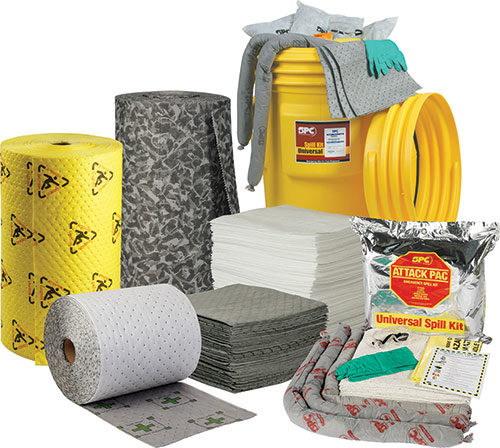Granular absorbents
What does the updated OSHA silica regulation mean for spill control?

Responding is Courtney Bohman, global product and marketing manager, Brady SPC, Milwaukee.
OSHA mandates clean, dry workplace floors so employees can safely and effectively do their work. That necessitates adequate treatment of common leaks, drips and spills within workplace facilities. Left ignored, these seemingly small incidents can cause injuries, hefty non-compliance citations and an overall decrease in productivity. When a spill does occur, it’s important to respond quickly with the right materials to mitigate the risks. That’s why a comprehensive and effective spill control response plan is an essential element of a safety program.
The right absorbent products help to keep your workplace clean and safe, especially around leaking equipment or frequent spill areas. Clay-based granular tends to be a common choice for spill response due to its perceived low cost. However, a number of factors need to be kept in mind when choosing the right absorbent for your facility.
The downside of granular absorbents is that the material frequently causes messes in the workplace, as the granules are easily tracked throughout the facility. The rough composition also can cause abrasion damage to equipment and floors. These are consequences of a product that really isn’t that effective because liquid tends to coat the granular instead of truly being absorbed.
More importantly for the safety of those working in the facility, one of the most common compositions of granular is diatomaceous earth or clay, which is 80 percent to 90 percent silica-based. This component is especially impactful in light of OSHA’s recently announced final rule that limits employee exposure to respirable crystalline silica. This final rule, including standards for the construction, general and maritime industries, was established to curb lung cancer, silicosis, chronic obstructive pulmonary disease and kidney disease – all of which have been linked to exposure to high levels of silica. With about 2.3 million workers exposed to respirable crystalline silica on the job, OSHA estimates this rule will save more than 600 lives and prevent more than 900 new cases of silicosis each year.
A number of effective alternatives to granular that don’t contain silica are available. One option is a granular composed of safer, more natural materials, such as corn cob, coconut or cellulose. Another option is using meltblown polypropylene-based products, including pads, rolls, mats, socks and pillows. This solution gives you a wider variety of solutions to align with the spill size, type (chemical, oil or general liquid) and application area, while also eliminating the potential of abrasive damage or granular messes.
Choosing the right absorbents for your spill response program goes beyond finding the most cost-effective solution. Keep in mind OSHA’s final rule on silica and the alternative absorbent materials when developing a solution that is right for your organization. With the right products in place, you can help keep employees safe while maintaining a clean, compliant and efficient workplace.
Editor's note: This article represents the independent views of the author and should not be construed as a National Safety Council endorsement.
Post a comment to this article
Safety+Health welcomes comments that promote respectful dialogue. Please stay on topic. Comments that contain personal attacks, profanity or abusive language – or those aggressively promoting products or services – will be removed. We reserve the right to determine which comments violate our comment policy. (Anonymous comments are welcome; merely skip the “name” field in the comment box. An email address is required but will not be included with your comment.)

